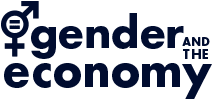Highlights
- Employees from dominant groups may feel threatened by diversity, equity, and inclusion initiatives, but this threat can lead to transformational learning, growth, and allyship, rather than backlash.
- Learning and growth are more likely to happen in organizations that value difference and promote diversity.
- Encouraging dialogue across different perspectives in a safe environment can also facilitate those in dominant groups towards allyship.
U.S. President Donald Trump’s recent executive order banning diversity, equity, and inclusion (DEI) programs in all federal departments is a stark example of backlash towards initiatives for fairness for historically marginalized groups.
Research has suggested that dominant groups—those with disproportionate access to resources and power in society, such as white men—feel threatened by DEI because it calls into question values held about their identity, and causes them to believe they will lose resources, power, or opportunities, even if this is not the case. This is called social identity threat.
For example, the #MeToo movement has made some men feel their identities as men are being tarnished and that they may be unfairly accused. Such feelings of threat can and have led to backlash.
But recent research by Professors Camellia Bryan and Brent J. Lyons suggests that this threat can actually be an opportunity for growth and allyship in workplaces—if the conditions in an organization are right.
Transformational learning from threat
Previous research has suggested that when dominant groups face threats to their identities, they become unwilling to be allies to those in marginalized groups. This research offers a new model that shows how such threats can lead to transformational learning and eventually, allyship.
The authors propose that when employees in dominant groups feel threatened by DEI or other initiatives for marginalized groups, these feelings of disorientation may in fact help them open up to reflection and introspection. They may begin to assess their existing beliefs and interpretations about marginalized groups, seek out new information that challenges their beliefs (such as books and media), and then update their beliefs. These actions can, in turn, result in meaningful support and allyship.
…when employees in dominant groups feel threatened by DEI or other initiatives for marginalized groups, these feelings of disorientation may in fact help them open up to reflection and introspection.
A safe and open organizational climate
However, such transformational learning may require an organization that encourages growth and change. Organizations that have a culture that promotes diversity, and sees diversity as enhancing learning and performance, can help employees to critically reflect on their identities and beliefs because they are more likely to see differences as respected and valued.
Dialogue from different perspectives can also facilitate learning for employees from dominant groups. Engaging with colleagues who offer alternative viewpoints in a psychologically safe environment can allow employees to challenge their harmful assumptions and figure out how to support marginalized groups in a way that is not performative. It can also allow them to receive feedback as they change their behaviours.
As such, the authors suggest that diversity training for employees help them confront bias in a way that encourages rather than shuts down dialogue. Training on how to approach difficult conversations, and on how to critically reflect on one’s interpretations and beliefs, may be more helpful than training that simply introduces information without space for dialogue.
Training on how to approach difficult conversations, and on how to critically reflect on one’s interpretations and beliefs, may be more helpful than training that simply introduces information without space for dialogue.
Change will not happen overnight. Members of dominant groups may be more amenable to growth when faced with identity threat if they already value equality and are relatively open to understanding inequality, compared to those who tend to justify inequality and hierarchy.
However, in an encouraging and safe environment, employees may progress from a surface-level understanding and reflection of inequality to a deeper understanding, and begin to be more critical of beliefs that are harmful to those facing marginalization.
While some companies and governments are cutting their DEI programs, the organizations that acknowledge backlash and embrace the opportunity for their employees to grow and learn will create more inclusive and engaged workplaces.
______
Research brief prepared by:
Title
Beyond Backlash: Advancing Dominant-Group Employees’ Learning, Allyship, and Growth Through Social Identity Threat
Author
Camellia Bryan and Brent J. Lyons
Source
Academy of Management Review
Published
2024
Link
https://journals.aom.org/doi/epub/10.5465/amr.2021.0521







